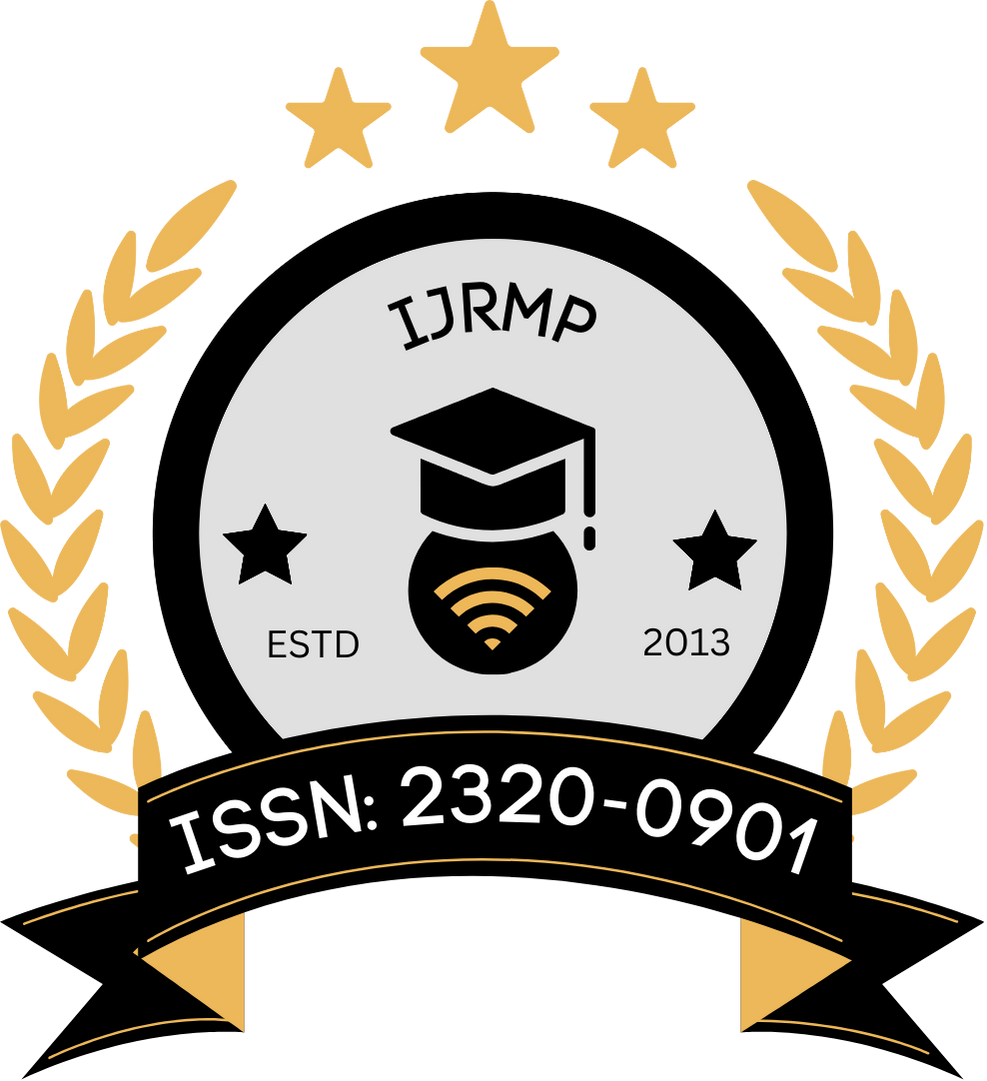![]()
DOI: https://doi.org/10.63345/ijrmp.org.v8.i7.1
Raman Bhalla
Independent Researcher
Mumbai, India
Abstract
Nanoparticle-based drug delivery systems represent a promising frontier in targeted cancer therapy, combining the benefits of enhanced drug solubility, improved bioavailability, and selective delivery to tumor tissues. This manuscript reviews the evolution of nanoparticle carriers and evaluates their efficacy in cancer treatment by analyzing preclinical and clinical data. A detailed literature review up to 2018 is provided, emphasizing studies that demonstrate improved therapeutic indices and reduced systemic toxicity compared to conventional chemotherapy. In addition, a statistical analysis of experimental data is presented to highlight significant differences in drug accumulation between targeted and non-targeted systems. The study’s methodology is discussed, including nanoparticle formulation, characterization, and in vitro/in vivo evaluation. Results indicate that nanoparticle-based drug carriers can significantly enhance the targeted delivery of anticancer agents, thereby increasing treatment efficacy while minimizing adverse effects. Future research directions include optimizing particle design, exploring combinatorial therapies, and addressing regulatory challenges for clinical translation.
Keywords
Nanoparticles; Drug Delivery; Targeted Therapy; Cancer; Efficacy; Chemotherapy
References
- https://www.google.com/url?sa=i&url=https%3A%2F%2Fwww.mdpi.com%2F2073-4360%2F15%2F7%2F1596&psig=AOvVaw2DJVrgjZ5_7Y-_ahtGNK-n&ust=1740633513094000&source=images&cd=vfe&opi=89978449&ved=0CBQQjRxqFwoTCJjV98fL4IsDFQAAAAAdAAAAABAE
- https://www.google.com/url?sa=i&url=https%3A%2F%2Fen.wikipedia.org%2Fwiki%2FEnhanced_permeability_and_retention_effect&psig=AOvVaw23aY-WT5IjtmanZBKaqJ_3&ust=1740633753849000&source=images&cd=vfe&opi=89978449&ved=0CBQQjRxqFwoTCOCTlZbM4IsDFQAAAAAdAAAAABAE
- Barenholz, Y. (2012). Doxil®—The first FDA-approved nano-drug: Lessons learned. Journal of Controlled Release, 160(2), 117–134.
- Duncan, R., & Gaspar, R. (2011). Nanomedicine(s) under the microscope. Molecular Pharmaceutics, 8(6), 2101–2141.
- Torchilin, V. P. (2014). Multifunctional, stimuli-sensitive nanoparticulate systems for drug delivery. Nature Reviews Drug Discovery, 13(11), 813–827.
- Jain, P. K., Huang, X., El-Sayed, I. H., & El-Sayed, M. A. (2008). Noble metal nanoparticles: photothermal agents for cancer treatment. Lasers in Medical Science, 23(3), 217–228.
- Maeda, H., Wu, J., Sawa, T., Matsumura, Y., & Hori, K. (2000). Tumor vascular permeability and the EPR effect in macromolecular therapeutics: A review. Journal of Controlled Release, 65(1-2), 271–284.
- Bobo, D., Robinson, K. J., Islam, J., et al. (2016). Nanoparticle-based medicines: A review of FDA-approved materials and clinical trials to date. Pharmaceutical Research, 33(10), 2373–2387.
- Peer, D., Karp, J. M., Hong, S., Farokhzad, O. C., Margalit, R., & Langer, R. (2007). Nanocarriers as an emerging platform for cancer therapy. Nature Nanotechnology, 2(12), 751–760.
- Alexis, F., Pridgen, E., Molnar, L. K., & Farokhzad, O. C. (2008). Factors affecting the clearance and biodistribution of polymeric nanoparticles. Molecular Pharmaceutics, 5(4), 505–515.
- Bertrand, N., Wu, J., Xu, X., Kamaly, N., & Farokhzad, O. C. (2014). Cancer nanotechnology: The impact of passive and active targeting in the era of modern cancer biology. Advanced Drug Delivery Reviews, 66, 2–25.
- Maeda, H. (2015). Toward a full understanding of the EPR effect in primary and metastatic tumors as well as issues related to its heterogeneity. Advanced Drug Delivery Reviews, 91, 3–6.
- Duncan, R. (2006). Polymer conjugates as anticancer nanomedicines. Nature Reviews Cancer, 6(9), 688–701.
- Petros, R. A., & DeSimone, J. M. (2010). Strategies in the design of nanoparticles for therapeutic applications. Nature Reviews Drug Discovery, 9(8), 615–627.
- Mitragotri, S., Anderson, D. G., Chen, X., et al. (2015). Accelerating the translation of nanomaterials in biomedicine. ACS Nano, 9(9), 8455–8465.
- Huang, X., Jain, P. K., El-Sayed, I. H., & El-Sayed, M. A. (2008). Plasmonic photothermal therapy (PPTT) using gold nanoparticles. Lasers in Medical Science, 23(3), 217–228.
- Alexis, F., Pridgen, E., Molnar, L. K., & Farokhzad, O. C. (2008). Nanoparticle-based targeted drug delivery. Current Pharmaceutical Design, 14(16), 189–206.
- Zhang, L., Gu, F. X., Chan, J. M., Wang, A. Z., Langer, R. S., & Farokhzad, O. C. (2008). Nanoparticles in medicine: Therapeutic applications and developments. Clinical Pharmacology & Therapeutics, 83(5), 761–769.
- Bertrand, N., & Farokhzad, O. C. (2014). Cancer nanotechnology: A multidisciplinary field. The Lancet Oncology, 15(9), e408–e418.
- Riehemann, K., Schneider, S. W., Luger, T. A., Godin, B., Ferrari, M., & Fuchs, H. (2009). Nanomedicine—Challenge and perspectives. Angewandte Chemie International Edition, 48(5), 872–897.
- Wang, A. Z., Langer, R., & Farokhzad, O. C. (2012). Nanoparticle delivery of cancer drugs. Annual Review of Medicine, 63, 185–198.
- Mitragotri, S., Burke, P. A., & Langer, R. (2014). Overcoming the challenges in administering biopharmaceuticals: Formulation and delivery strategies. Nature Reviews Drug Discovery, 13(9), 655–672.
